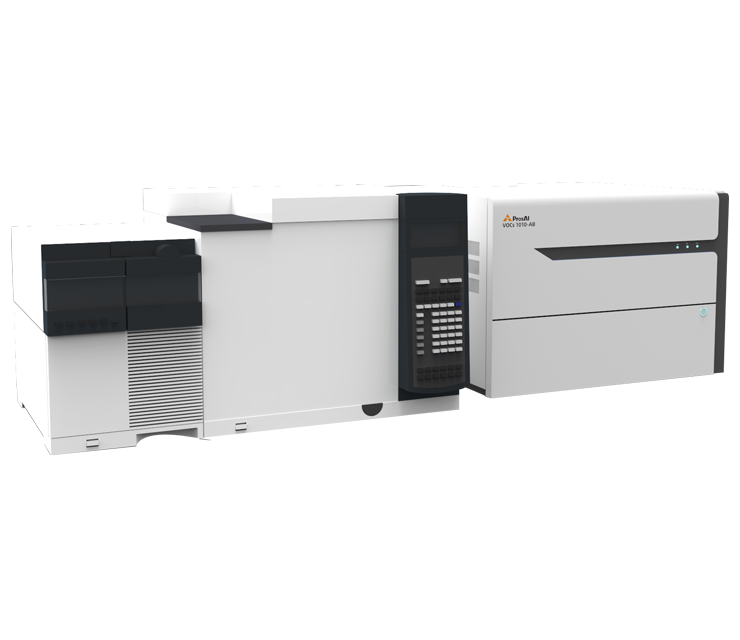
Product Presentation
Ambient air or standard gas enters the pre-concentration system at a constant flow rate and volume. After being dehydrated, trapped and focused by a three-stage cold trap refrigerated by electronic refrigeration and cryogenic compressors, the target is enriched, purified, and focused instantaneously. The analysis enters the gas chromatographic system for separation, and is qualitatively and quantitatively analyzed by a hydrogen flame ionization detector (FID) or a mass spectrometry detector (MSD) to obtain the concentration of each component of volatile organic compounds. Mainly used to analyze C2~C12 hydrocarbons, volatile halogenated hydrocarbons, oxygen-containing volatile organic compounds, ODS in the air, totaling 116+1+ODS components. It meets the requirements of "Technical Requirements and Detection Methods of Ambient Air Volatile Organic Compounds Gas Chromatography Continuous Monitoring System" (HJ 1010-2018).
Product Features
A set of three-stage electronic refrigeration and cryogenic compressor refrigeration cold trap (dehydration, trapping and focusing) flow path system for sample pre-concentration, using heart cutting for component cutting, C2~C3 components are detected by FID, and the rest The components are detected by MS. The system is equipped with two sets of trapping columns, A and B, which can be switched to ensure the time representativeness of the hourly average value. Large-volume pressurized sampling system, with higher sensitivity and lower detection limit. The system is equipped with silanization dynamic dilution, fully automatic control and quality assurance. The use of full-flow silanization inertness and full-process non-cold-spot heat preservation technology makes the system better linear, lower detection limit, and high precision. Product performance indicators are better than the requirements of "Technical Requirements and Detection Methods of Ambient Air Volatile Organic Compounds Gas Chromatography Continuous Monitoring System" (HJ 1010-2018).
Application Fields
It is mainly used to automatically monitor the C2~C12 hydrocarbons, volatile halogenated hydrocarbons, and oxygen-containing volatile organic compounds in the ambient air and the atmosphere in polluted areas, with a total of 116+1 components.






